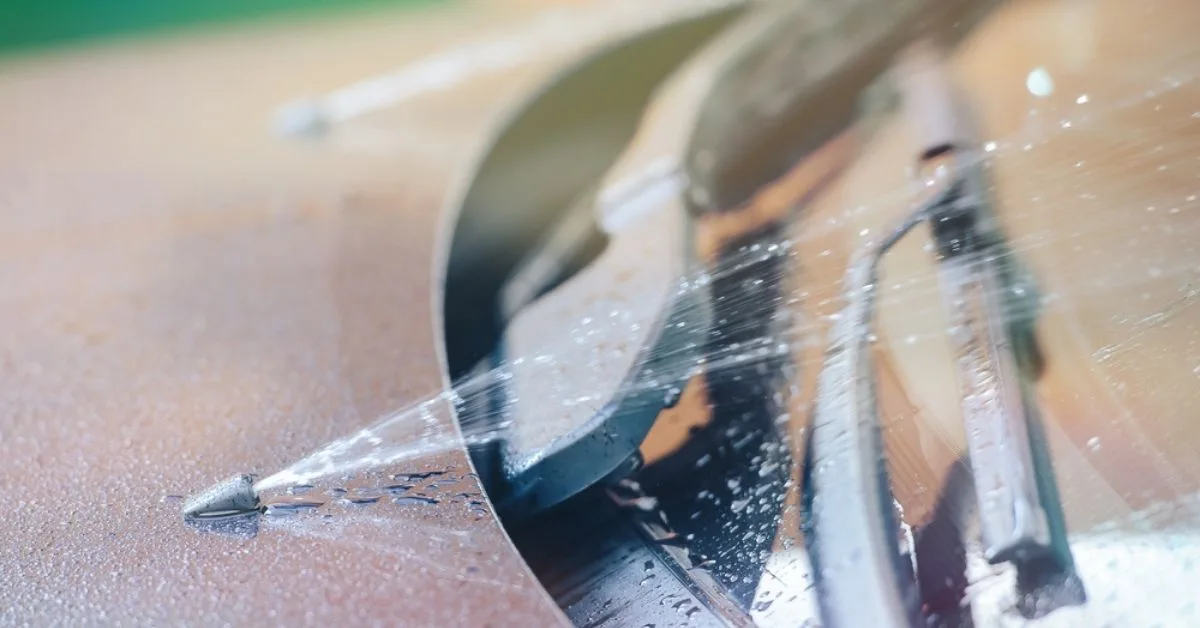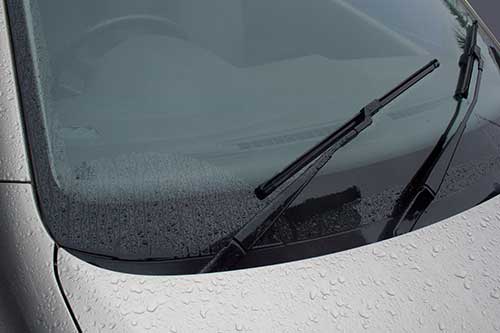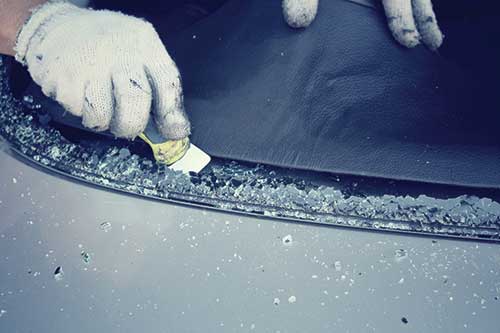Windscreen washer fluid is something most drivers don’t think about – until their windscreen looks like a bug cemetery.
But that little reservoir under your bonnet does a big job. Choosing the right washer fluid can mean the difference between clear vision and dangerous driving conditions.
This guide covers everything you need to know to pick the best liquid for your vehicle, based on Australian weather, safety, and practicality.
What Is Windscreen Washer Fluid?
Windscreen washer fluid is a specially formulated liquid designed to clean your windscreen while you drive.
It sprays from the washer nozzles and works in combination with your wiper blades to remove dirt, grime, bugs, and road salt.
While it may seem like just coloured water, it contains a blend of cleaning agents and additives tailored for vehicle glass and external driving conditions.
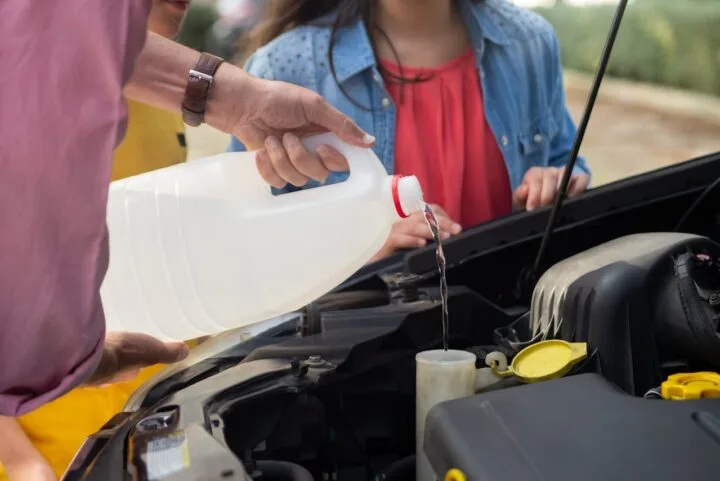

The Purpose of Washer Fluid
The main job of washer fluid is to help you see clearly. Road grime, bird droppings, and bug splatter can quickly obscure your view.
Washer fluid cuts through these messes and helps your wipers sweep them away. On rainy days or dusty roads, it can be the difference between a safe drive and a guessing game.
Typical Ingredients Found in Washer Fluids
Most commercial washer fluids contain water, alcohols (like methanol or ethanol), detergents, dyes, and sometimes antifreeze agents.
The alcohol helps prevent freezing and aids in evaporation. Some blends include additional agents for bug removal or streak-free finishes.
In warmer climates like much of Australia, antifreeze isn’t always necessary, but a good detergent and bug remover are must-haves.
Why Using the Right Windscreen Washer Fluid Matters
It’s tempting to think any liquid will do, but washer fluid isn’t just about cleanliness – it’s about safety. The right product protects your windscreen and your visibility.
Safety and Visibility Considerations
Driving with a dirty windscreen is risky. Sunlight or headlights can reflect off smudges and smear lines, blinding you temporarily.
A quality washer fluid quickly clears the glass without leaving streaks. That clear view could help you spot a cyclist or a road darting across the road just in time.
Impact on Vehicle Components
Cheap or incorrect fluids can corrode the washer system, damage paint, or dry out rubber seals. For example, using dishwashing liquid may seem clever, but it can foam up and clog nozzles.
Also, some homemade mixes can leave residue that’s hard to remove later.


Seasonal and Climate-Based Performance
In cooler Australian regions, like parts of Victoria or Tasmania, fluids with antifreeze properties help prevent freezing.
In tropical or dusty areas, fluids with bug and dust removers are more helpful. Pick the fluid based on where and how you drive, not just what’s cheapest on the shelf.
Types of Windscreen Washer Fluids
There’s no one-size-fits-all solution. Washer fluids come in several forms, each suited for different conditions and preferences.
Pre-Mixed Commercial Fluids
These are ready to pour straight into the reservoir. They’re ideal for everyday drivers who want a fuss-free solution.
Many include cleaning agents and minor antifreeze properties, making them suitable for most parts of Australia. They’re also less likely to damage vehicle components since they’re professionally balanced.
Concentrated Washer Fluids
These come in small bottles and need to be diluted with water, usually tap or distilled water.
They’re more economical in the long run and offer flexibility. You can adjust the concentration depending on the season or grime level.
Winter Formulas and Anti-Freeze Blends
Designed for sub-zero temperatures, these blends prevent your fluid from turning into a popsicle inside the tank.
While not often needed in most Australian states, they can be handy for high-altitude or alpine regions. They often contain higher alcohol content for lower freezing points.
Bug Remover and Specialty Fluids
If you regularly drive on highways or in rural areas, these are lifesavers. They break down insect remains and tree sap better than regular cleaners.
Look for labels that mention “bug wash” or “summer blend.” Your windscreen – and your patience – will thank you.
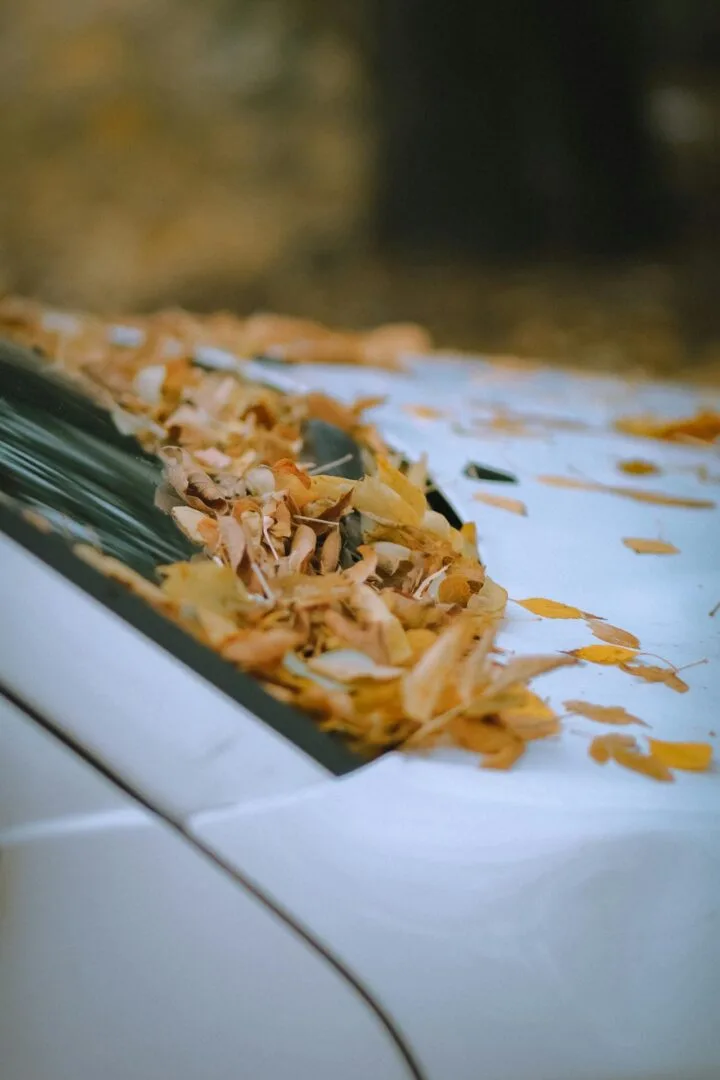

Homemade Washer Fluids: Are They Effective?
DIY fluids sound appealing, especially for budget-conscious drivers. But they can be a mixed bag. Let’s look at the pros and pitfalls.
Common DIY Ingredients
Popular recipes often include water, vinegar, ammonia, or even dish soap. Some people add a splash of rubbing alcohol for freeze resistance.
While they can clean to an extent, these mixes often fall short in safety, shelf life, or compatibility with your washer system.
Pros and Cons of Homemade Solutions
The biggest advantage is cost. Making your own can be cheaper, especially for frequent drivers. But the downsides?
They might leave streaks, clog spray nozzles, or harm paintwork. And unless you test your mix, you won’t know how it performs until it’s too late.
Risks of Using Improper Mixtures
Using improper ratios or ingredients that can freeze, foam excessively, or damage rubber hoses and plastic tanks can cause damage to your vehicle.
Vinegar is acidic and can wear away protective coatings over time. Dish soaps can cause suds to overflow onto the bonnet. Stick to professional products unless you’ve done your homework.
How To Choose the Best Washer Fluid for Your Car
Think of washer fluid as part of your safety gear. Choosing the right one depends on several practical factors.
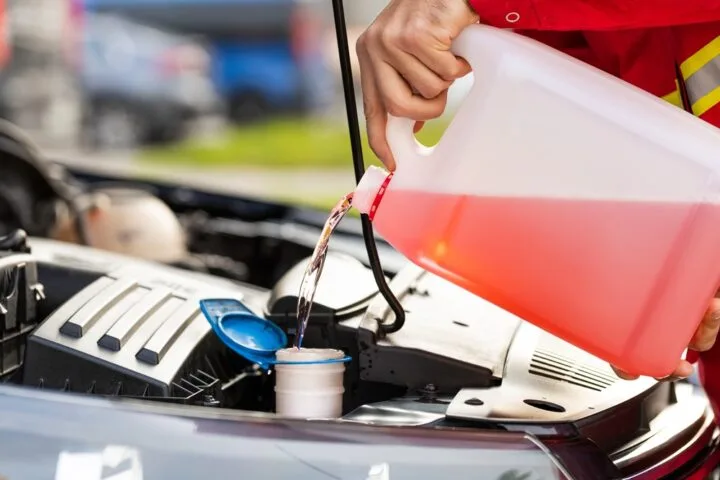

Consider Your Local Climate
In hot and dry areas, you’ll need a fluid that tackles dust and haze. In colder parts, antifreeze components matter more.
Insects and sap? Grab a bug wash blend. Match the fluid to your environment like you would sunscreen to UV levels.
Check Vehicle Manufacturer Recommendations
Your car’s manual may suggest what type of fluid to use or avoid. Some vehicles with advanced washer systems require specific chemical tolerances.
Following the manual can save you from headaches or voided warranties.
Look for Added Benefits (e.g. Bug Removal, Streak-Free)
Not all washer fluids are equal. Some formulas offer streak-free cleaning or rain-repellent properties. If you commute at dawn or dusk, opt for bug-removal fluids.
If you’re driving through red dirt country, go for heavy-duty grime busters.
Environmental Impact and Biodegradability
Some washer fluids are biodegradable and safer for groundwater. They skip harmful solvents and use plant-based detergents.
If you’re eco-conscious or drive in areas with runoff concerns, these options offer peace of mind without compromising performance.
Top Recommended Windscreen Washer Fluids in Australia
Here are some popular and effective choices found in major auto stores around the country.
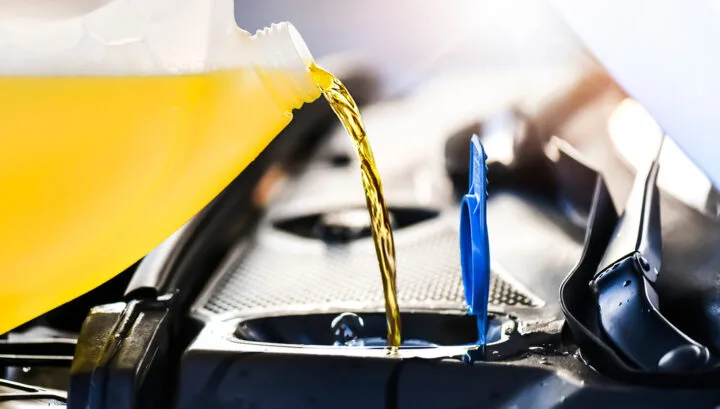

Best All-Season Fluid
Rain-X 2-in-1 All-Season: Offers cleaning power and frost resistance, making it versatile for most Australian conditions.
Best Winter-Grade Fluid
Prestone De-Icer Washer Fluid: Ideal for alpine areas or cold winters. It resists freezing and helps de-ice the glass quickly.
Best Budget-Friendly Option
SCA Windscreen Washer Additive: Available from Supercheap Auto. It’s affordable and effective, available in a concentrate or ready-to-use formula.
Best Eco-Friendly Washer Fluid
Nextzett Kristall Klar: A German-made fluid that’s biodegradable, ammonia-free, and safe on all finishes. Great for the green-minded driver.
Tips for Using Windscreen Washer Fluid Effectively
Washer fluid isn’t just “fill and forget.” A little know-how can make it go further and perform better.
How Often Should You Refill?
Check your washer fluid level monthly or before any long trip. If you use it often, like on dusty outback drives, you may need to refill every couple of weeks.
How To Check Washer Fluid Levels
Pop the bonnet and look for the washer fluid cap – usually marked with a windscreen icon.
The reservoir is often translucent, so you can see the fluid level without opening it. If it’s low, top it up with the right mix.
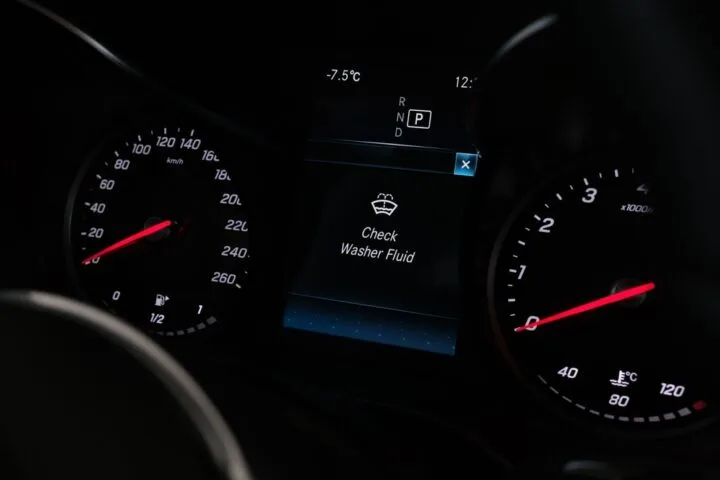

When and Why to Flush the Washer System
If you’ve accidentally added the wrong fluid or notice a foul smell, it’s worth flushing the system. Drain the tank, rinse it with clean water, and refill with your preferred product.
Flushing also helps if nozzles are clogged or if algae has started to form.
Storage Tips and Shelf Life
Keep washer fluid bottles sealed and out of direct sunlight. Most have a shelf life of two to three years. Store away from pets and kids, as many contain alcohol or detergents that are unsafe if ingested.
What Not To Use in Your Washer Reservoir
Let’s talk no-nos. Some things just don’t belong in that tank, no matter how clever they seem at first glance.
Why Plain Water Isn’t a Good Idea
Water might seem fine, especially in warmer climates, but it can lead to mineral buildup, algae growth, and poor cleaning.
In winter, it can freeze in the lines or crack the tank. Also, water doesn’t cut through grime like a proper fluid does.
Harsh Chemicals to Avoid
Don’t pour in bleach, industrial cleaners, or anything with a strong solvent base. These can damage hoses, seals, and wiper blades. Plus, they could strip wax or protective coatings from your paint.
Common Myths About Washer Fluids
There’s a lot of well-meaning but bad advice floating around. Let’s bust some myths.
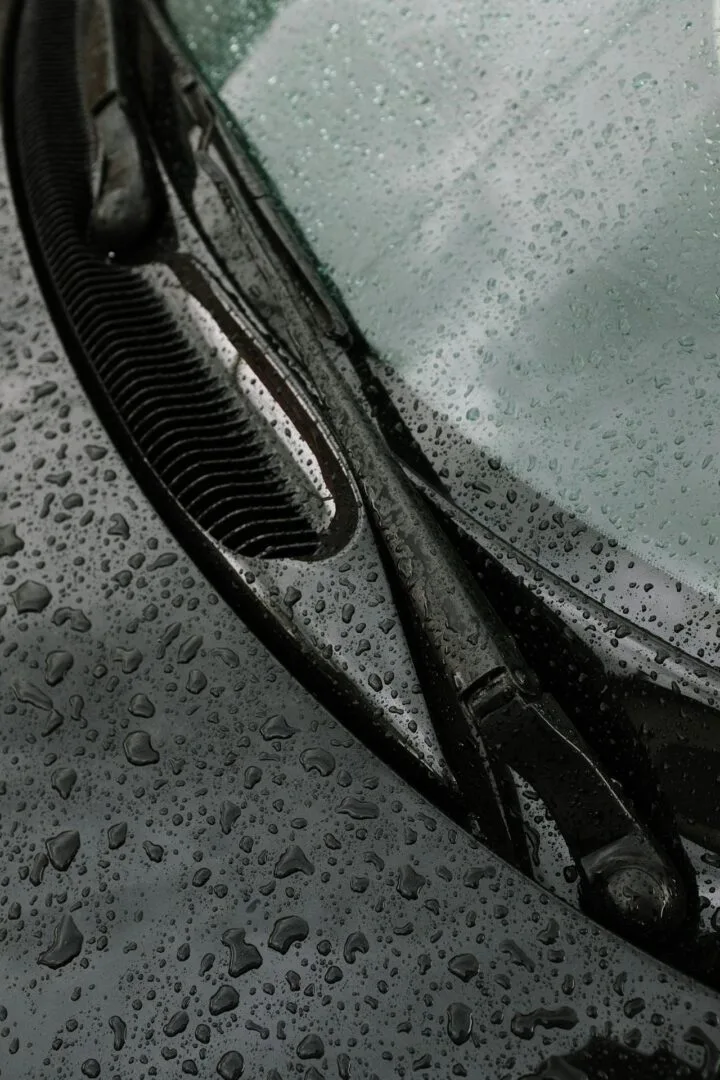

Myth: All Washer Fluids Are the Same
Nope. Some clean better, some resist freezing, and others remove bugs or repel water. Picking the right one affects how well your windscreen stays clean and clear.
Myth: You Can Use Dish Soap in Your Washer System
While dish soap is great for plates, it creates foam that can clog spray nozzles and leave streaks. It’s also harsher than you might think – bad news for rubber and paint.
Myth: Freezing Only Happens in Cold Regions
Wrong again. Even in Australia, mountain regions and early winter mornings can drop below freezing. If you’re driving in Alpine areas, use a fluid with antifreeze.
Frequently Asked Questions
Still scratching your head? These quick answers might help.
Can You Mix Different Brands of Washer Fluid?
Yes, but it’s better to stick to one brand or type to avoid chemical clashes or odd smells. If switching types, flush the system first.
Is Washer Fluid the Same as Antifreeze?
Not quite. While some washer fluids contain antifreeze agents, engine coolant (what we call antifreeze) is a different product and should never be used in the washer tank.
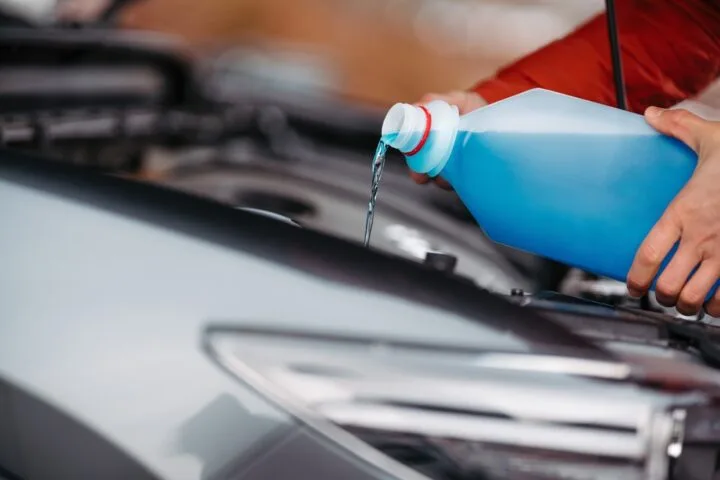

Is Tinted Washer Fluid Better?
The colour doesn’t impact performance. It’s mostly for visual identification. Focus on what the label says it does, not the hue.
Does Washer Fluid Expire?
Yes. Most washer fluids last 2–3 years when sealed. If it smells off or looks murky, toss it.
Final Thoughts on Choosing the Best Windscreen Washer Fluid
Washer fluid may seem like a small detail, but it plays a big role in road safety. Choosing the right type means clearer views, cleaner glass, and fewer surprises behind the wheel.
Whether you’re dodging bugs on the Bruce Highway or dealing with morning frost in the Snowy Mountains, there’s a washer fluid that fits.
So, the next time you top up, think of it as one more step in taking care of your ride – and yourself.
